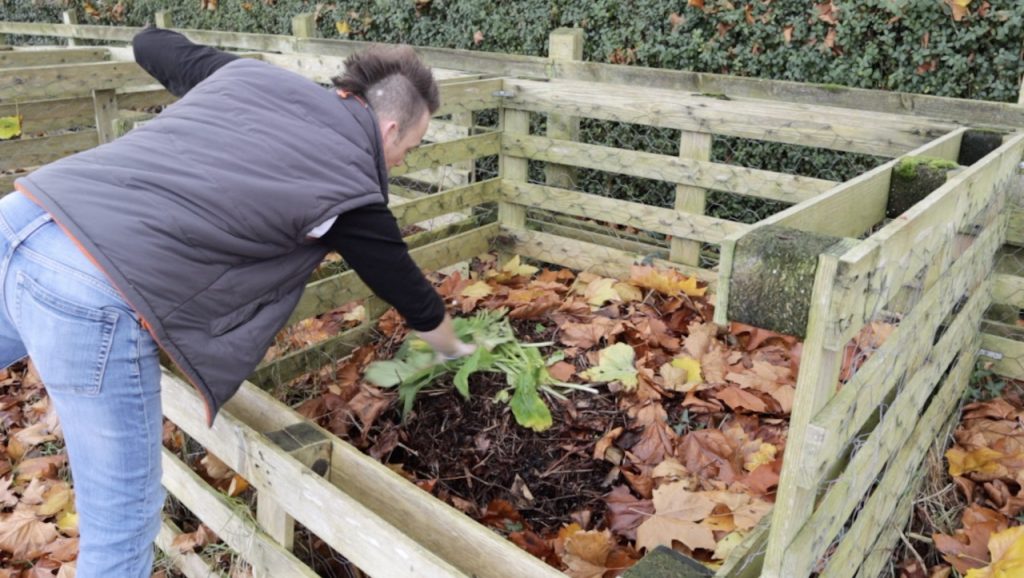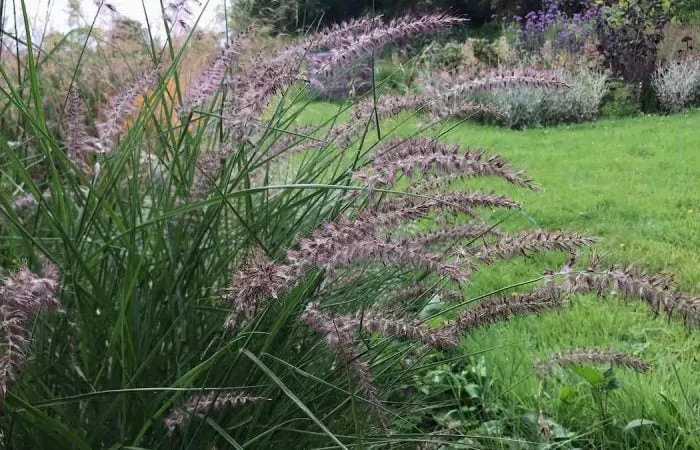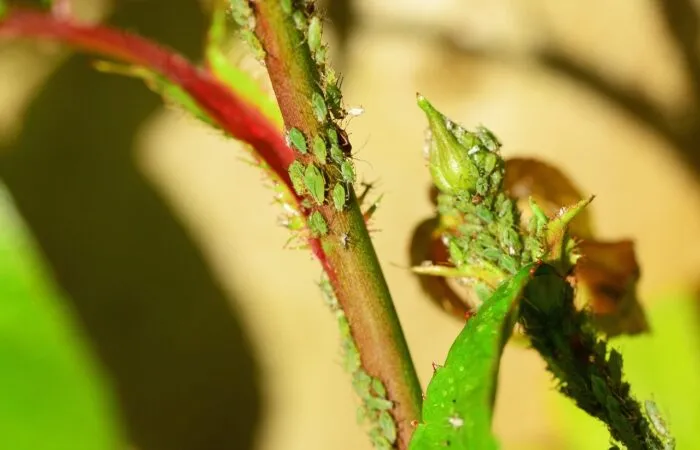5 Ways to Recycle Plants in the Garden: Eco Tips
 Lee Burkhill: Award Winning Designer & BBC 1's Garden Rescue Presenters Official Blog
Lee Burkhill: Award Winning Designer & BBC 1's Garden Rescue Presenters Official Blog

No matter what size garden you have at some point plants will finish for the year and need removing. Whilst shrubs and trees provide structure and height, the herbaceous perennial plant group (plants that die back each year to the ground) will need cutting back once they've set seed. Usually, this task is done in late Autumn or in Winter.
It can be tempting to just bin the cuttings or add them to your green waste bins for the council to recycle. However, there are other uses for your herbaceous perennials before their final destination on your compost heaps or green bins. By recycling garden waste you are helping to close the loop on waste. This means that less garden waste goes to landfills or ends up using power at recycling centres as they break it down.
The fewer green items we need to send off the better this is for the environment as a whole. As ethical gardeners, we should always try to reduce, reuse and recycle in the garden.

Collecting seeds from herbaceous perennials is both great fun and also a cost-effective way to propagate plants in your garden. By collecting seeds from plants you can help bulk up your borders or gift seeds to friends to help them introduce even more species of pollen-rich plants to their gardens.

To collect seeds wait until your herbaceous perennials have started to crisp up. Then using secateurs carefully remove the seed heads. Holding them upright so you don't spill the seeds. Sometimes tying a paper bag around the seed head and then cutting them off can help contain them from spilling out.
Then shake out the seeds either into your palm or a paper bag. You can then store these somewhere dry and cool until you're ready to sow them to propagate more plants!

If you're new to seed sowing make sure you check out my guide to sowing seeds plastic-free in the garden. By growing your own plants from seed you can help bulk up your gardens without the need to spend more money on container-grown plants. Seed sowing is a great way again to reduce our carbon footprint in the garden as it enables us to reduce the amount of container-grown plants imported usually from overseas.
Whilst people often buy fresh cut flowers there's nothing stopping you from using dried flowers in the same way. Again helping to reduce spending and unnecessary carbon spending with your floristry! Dried herbaceous perennials often have really intriguing seed heads once they have crisped up in the garden. Once the petals fall the seed heads can look almost alien and have a beguiling structure.

Before you recycle these spend plants on the compost heap they can make excellent cut flowers or floristry arrangements. By using dried plants that have seed heads in vases or arrangements you can help bring an autumnal feel to your home interiors. Quite often dried flowers have unique and strange appearances which can bring an original look to your floristry.

Given how unusual they look you can be guaranteed that it will make a great talking point for visitors and friends. Did you know that you can take my course and learn how to become a Garden Ninja yourself? Click here for details
Did you know that dried plants such as herbaceous perennials or twiggy prunings can be recycled as firelighters for log burners or fire pits? Why waste money buying kindling when you can make your own and spend that spare money on more plants or gin?! By creating your own firelighters you are yet again reducing your carbon footprint and helping reuse garden materials.

Making firelighters is so easy from plants. I cut back any dried brown and crispy herbaceous perennials. I then fold them into smaller sections to the size that will fit in my log burner or fire pit. These are usually around 20cm long.
I then use some string to tie them together in tight little bunches. Then I store these firelighters somewhere dry and out of the rain. Usually behind my garage under a porch and then use them when I need them to light my log burner.

These make excellent kindling and firestarters for log burners. I add one or two to my fire and some smaller splints of wood. I light the firelighters and this is enough to get my log burner going without any chemical firelighters or liquid fuels. Brilliant!

If you have a bug hotel in your garden then plant prunings and clipping from any time in the year make a great addition. Bug hotels are a vital part of gardening ecology as they encourage beneficial insects into our towns and cities. Which in turn helps pollinate crops, flowers and fruit meaning a more diverse and productive garden all round.

Cutting back spent plants and then layering them into your bud hotels helps increase diversity with beneficial insects. It also adds a splash of green to your otherwise insert bug hotels helping bring them to life as a focal point in the garden. Insects and creepie crawlies can then use this material to take shelter over the winter or use it to feed off.

Bug hotels are a brilliant way to help provide environments in urban gardens for all sorts of beneficial bugs and wildlife. If you want to know how to create a bug hotel the easy way then check out my guide here. If you have children then building a bug hotel can be a great way to get them involved in the garden from an early age.
Last but not least we need to cover composting spent plants in the garden. Making your own compost is both super easy and also a great way to reduce your garden waste without relying on bin collections or rubbish dumps such as landfills. Homemade compost is often called 'black gold' in gardens and allotments as it helps feed plants slowly over the gardening year.
Compost also helps improve soil texture, retain moisture and when used as a mulch prevents weeds from taking over our flower beds or raised vegetable beds.
If you've tried all of the above then the last step is to build your own compost bin and start creating your own wonderful plant feed each year. Cut plants are full of nitrogen and some carbon which can help create brilliant peat-free compost, you can also see Nic's fantastic list of peat-free compost suppliers if you can't make your own.

With all compost, you need to get a good balance between greens or nitrogen and browns or carbon. Making your own compost bins couldn't be easier and is a great way to recycle plant waste in the garden. I've used cheap and cheerful pallets to make large connected bins. However, you can also use smaller bins or small heaps of plant waste to create your own compost piles.
I use an easy-to-remember mix of 50% greens (nitrogen) to 50% browns (carbon) in my compost bin taking around 12-18 months to produce brilliant compost. The more you turn compost the quicker it will break down. If your compost gets too sludgy it has too many greens (nitrogen) to dry and not breaking down is when there are too many browns (carbons). So aim for a balanced mix.
Recycling herbaceous perennials in the garden offers several benefits. Firstly, it helps to maintain a healthy garden ecosystem by returning organic matter to the soil. As perennials grow and mature, they accumulate nutrients from the soil. By recycling them back into the garden, these nutrients are reintroduced, enriching the soil and promoting plant growth.
Additionally, recycling herbaceous perennials can save time and money. Instead of purchasing new plants each season, gardeners can propagate existing perennials through division or cuttings, reducing the need for buying new plants. This not only saves money but also ensures a continuous supply of plants that are well-adapted to the local growing conditions.
Furthermore, recycling perennials promotes sustainability and environmental conservation. By reusing plants already established in the garden, gardeners minimize waste and reduce their ecological footprint. This practice aligns with the principles of sustainable gardening and contributes to a more eco-friendly approach to landscaping which is what the Garden Ninja community is all about!
Ultimately, recycling herbaceous perennials in the garden is a practical and environmentally responsible practice that benefits both the garden and the wider ecosystem. It supports soil health, saves resources, and promotes sustainable gardening practices for a greener and more resilient landscape.

By following the 5 tips above to recycle your garden plants you can make sure that you reuse pretty much all of your garden plant waste. Resulting in fewer carbon miles in both bringing in compost to your garden and removing waste from your property. Which is better for the environment.
Another good idea is to team up with your neighbours if one of you has a compost bin. You can trade cuttings and plants to help use each other's spaces more efficiently. One neighbour could make compost the other set up a bug hotel or make leaf mould.
I’d love to hear from you on my Twitter, Facebook or Instagram pages. If you have a gardening question then why not use the Garden Ninja Gardening Forum where hundreds of Garden Ninja members can help you!
Happy Gardening!








JOIN THE NINJAS

Be the first in line for new Guides, Discount codes and Offers